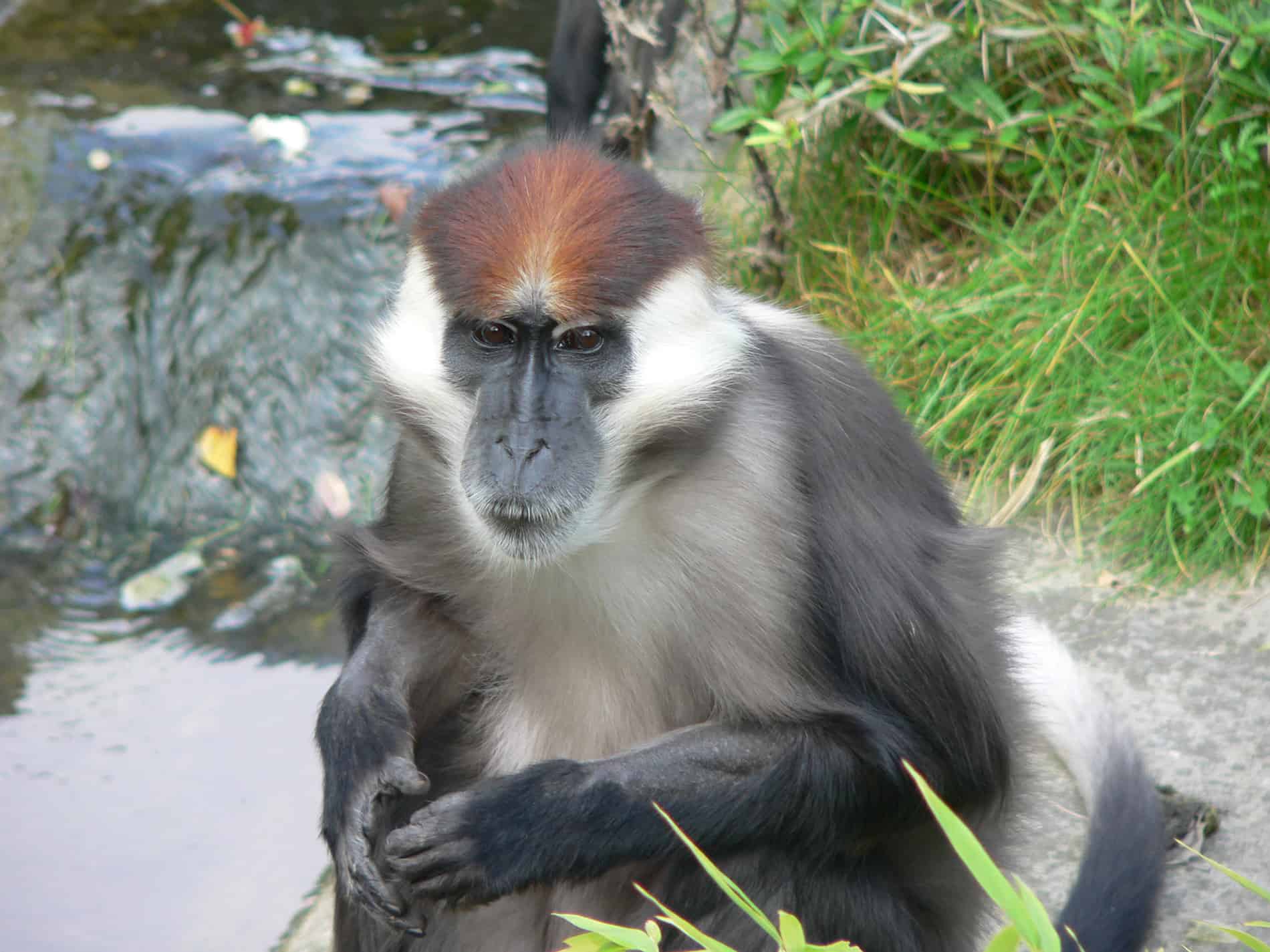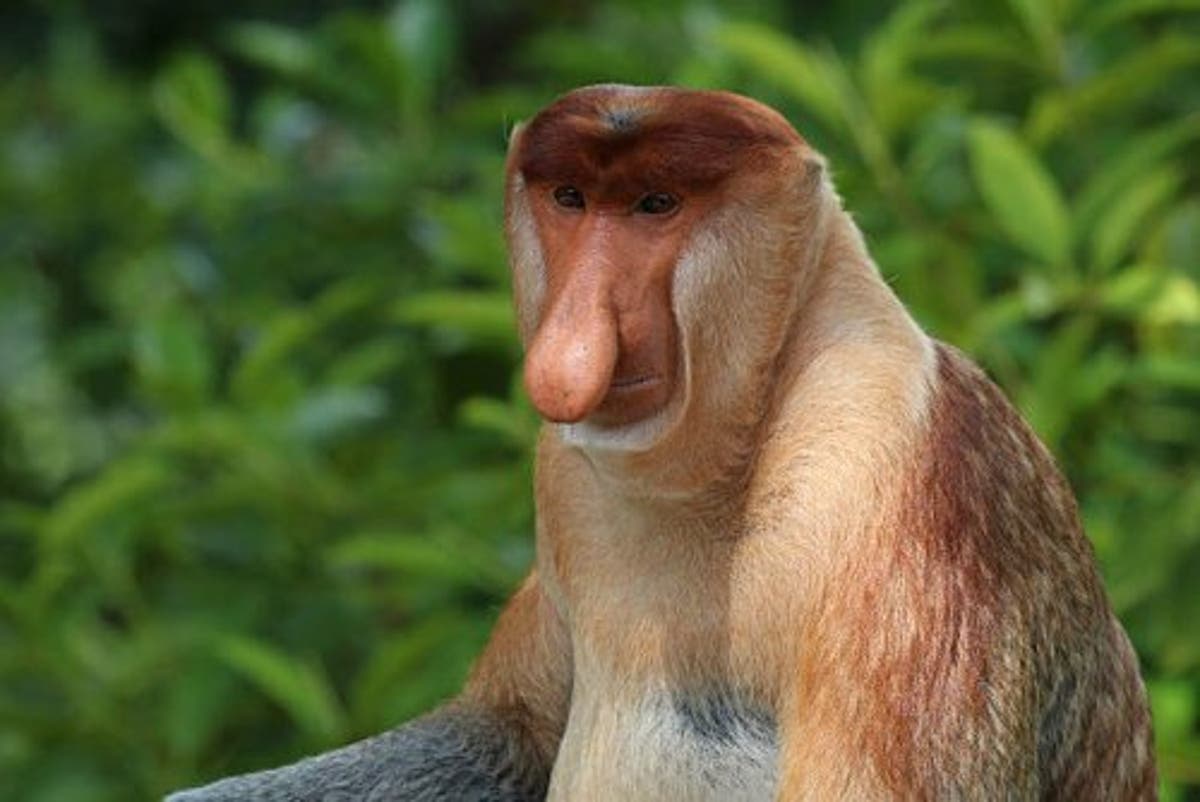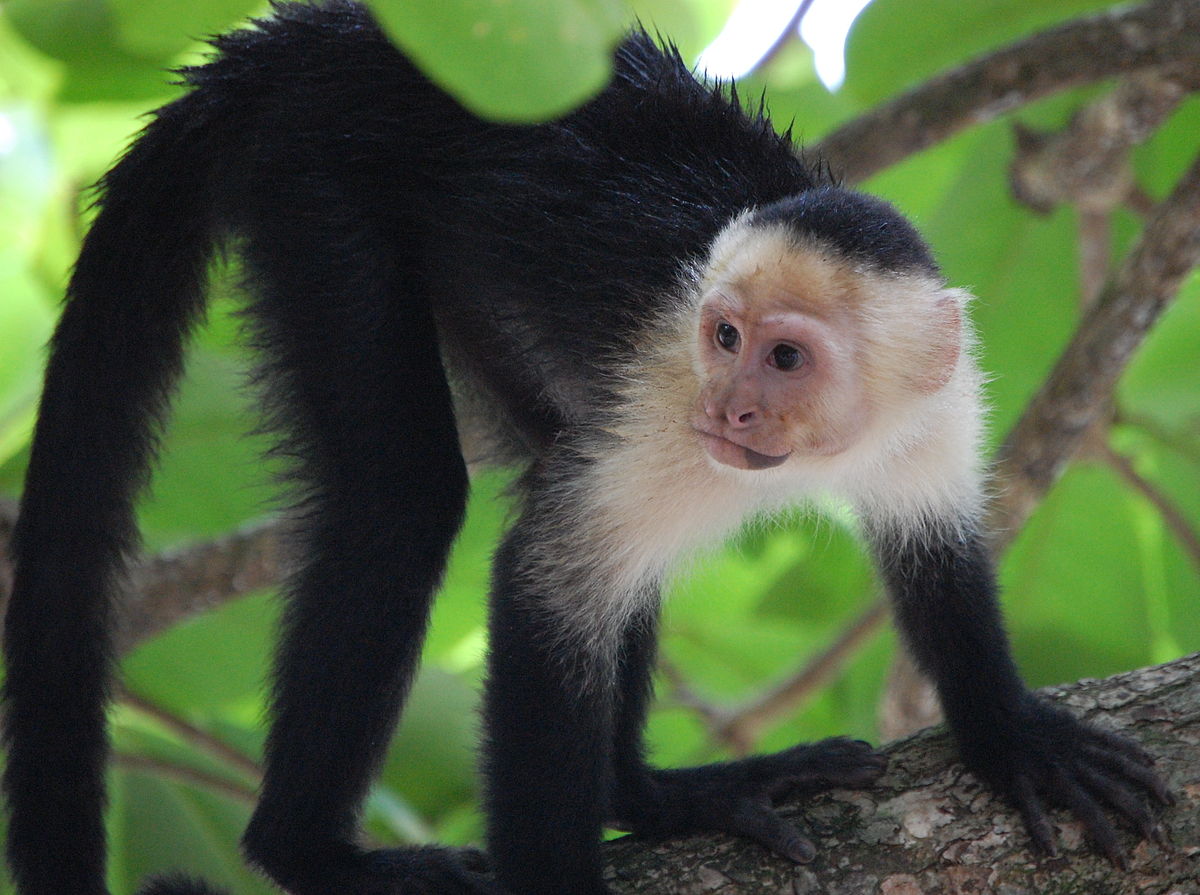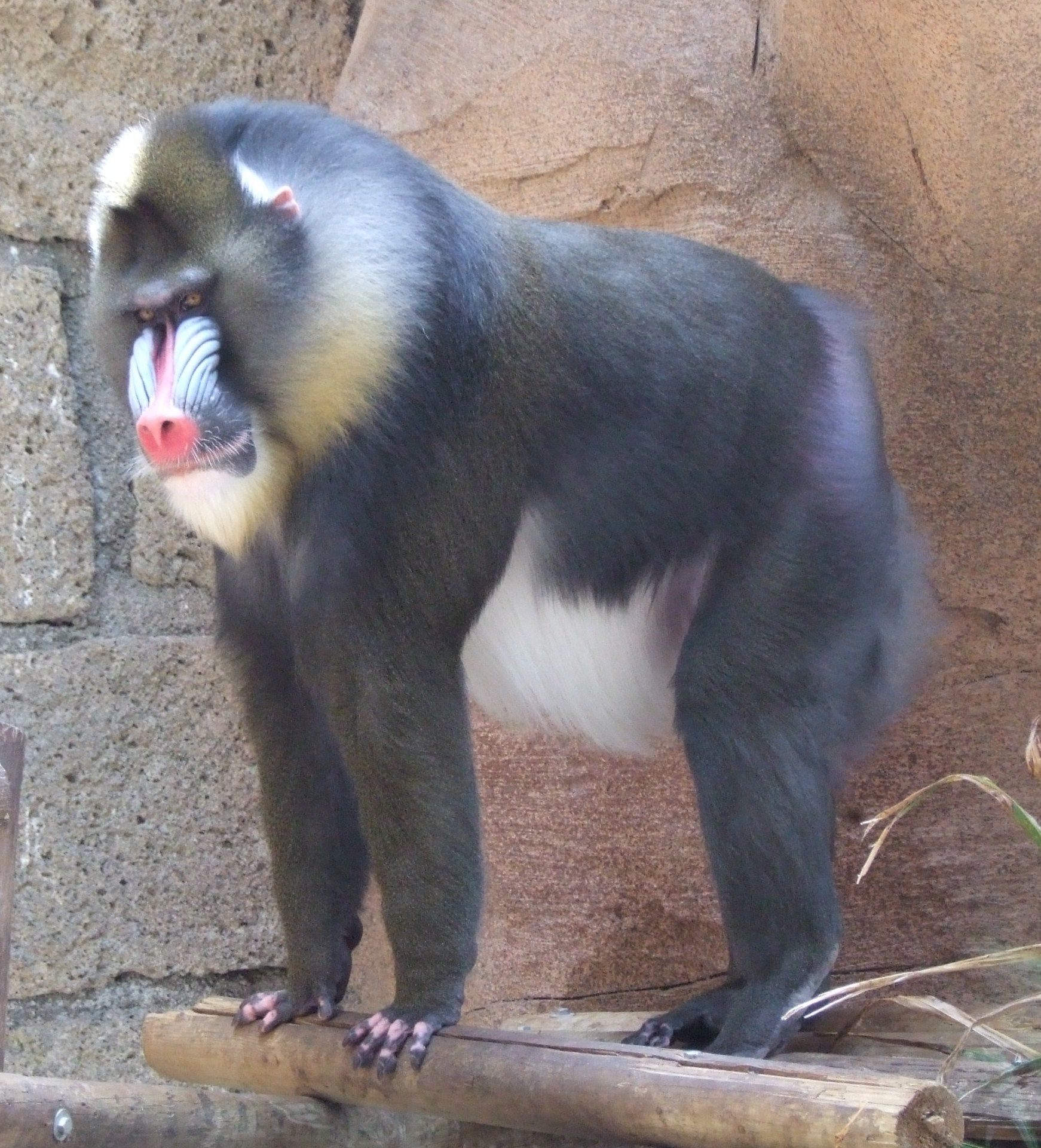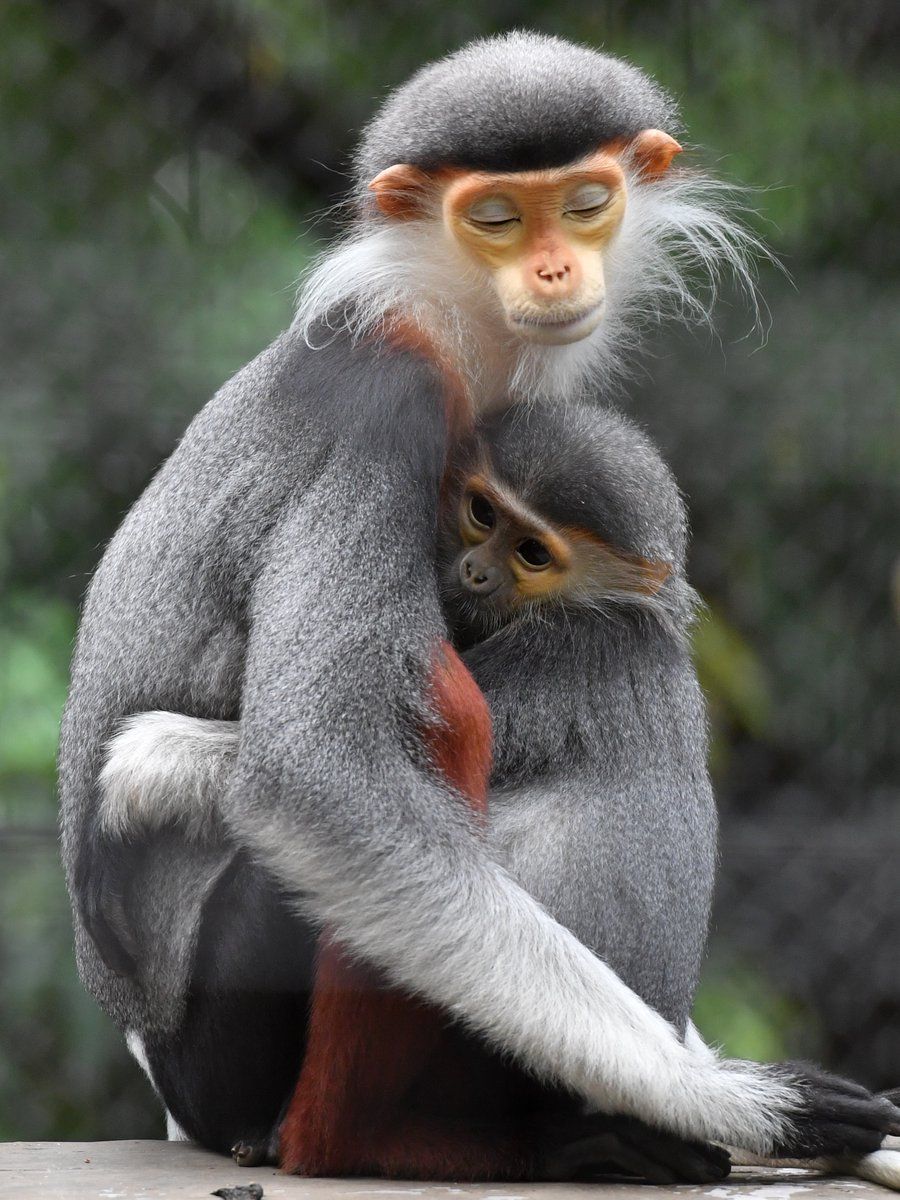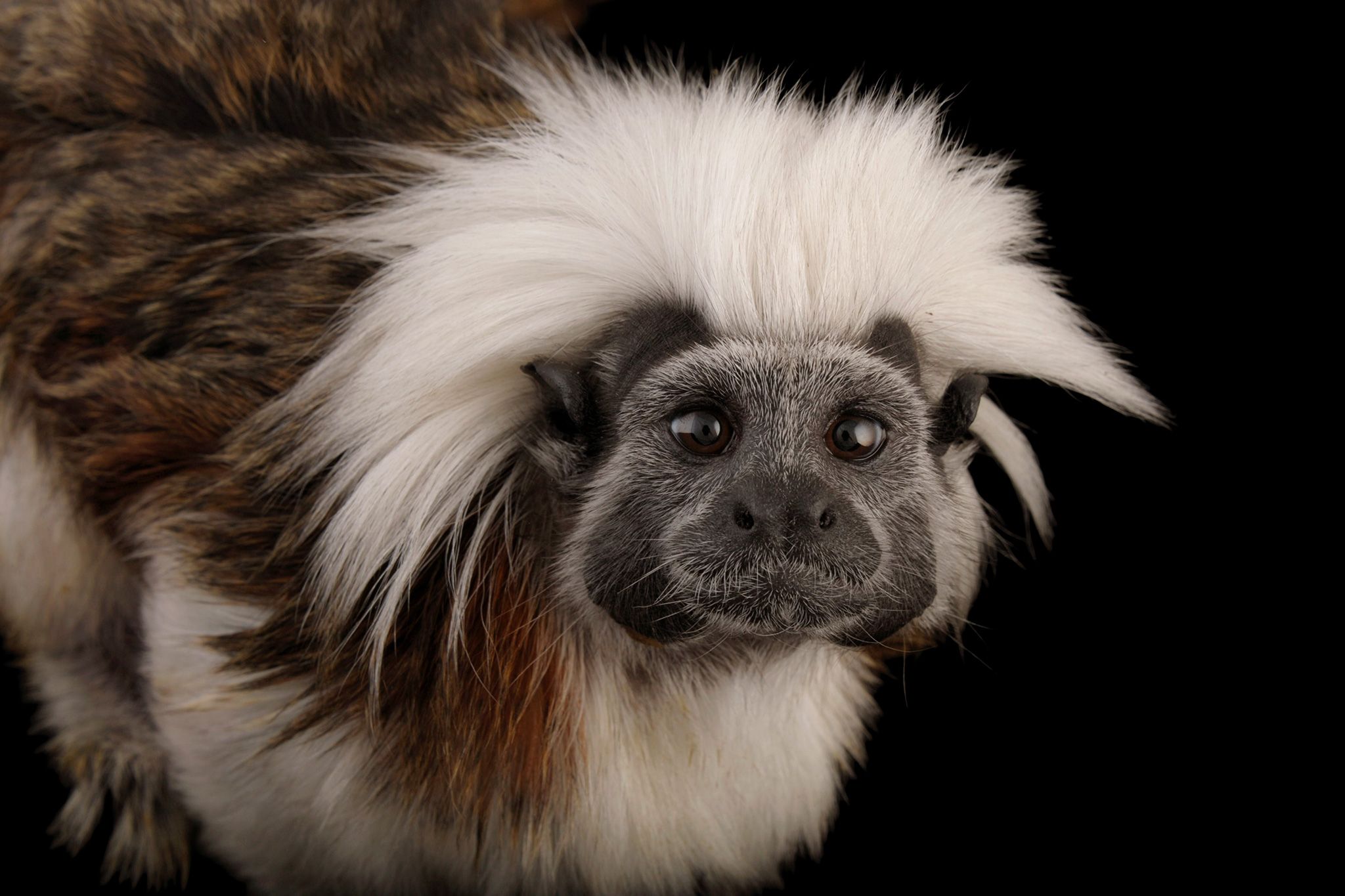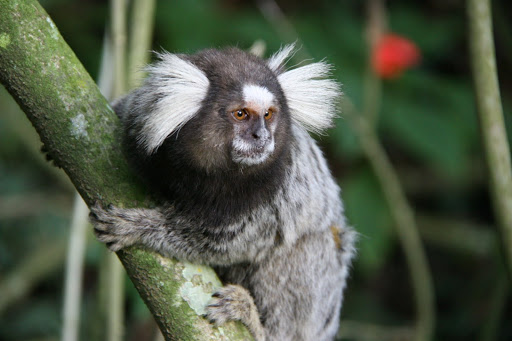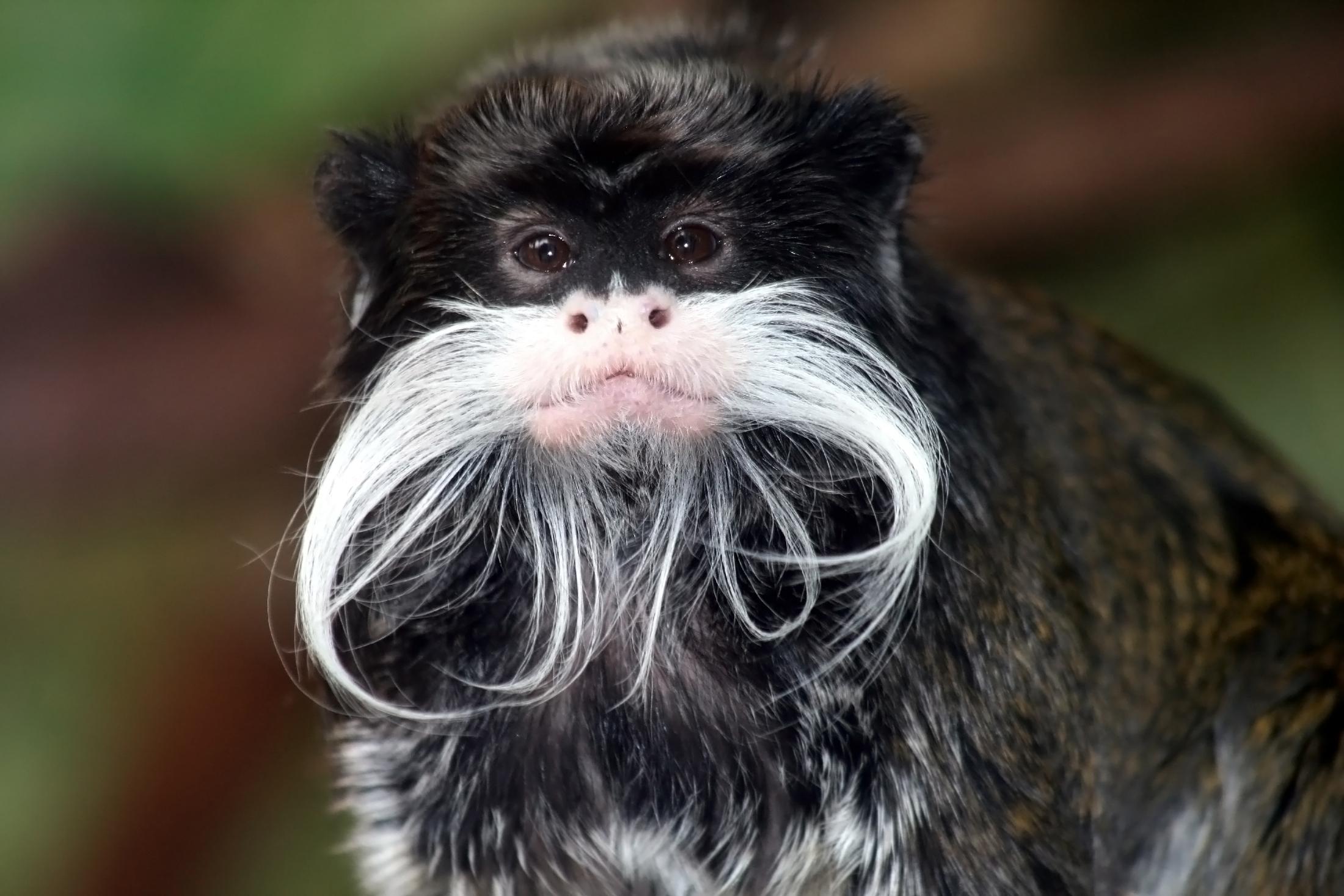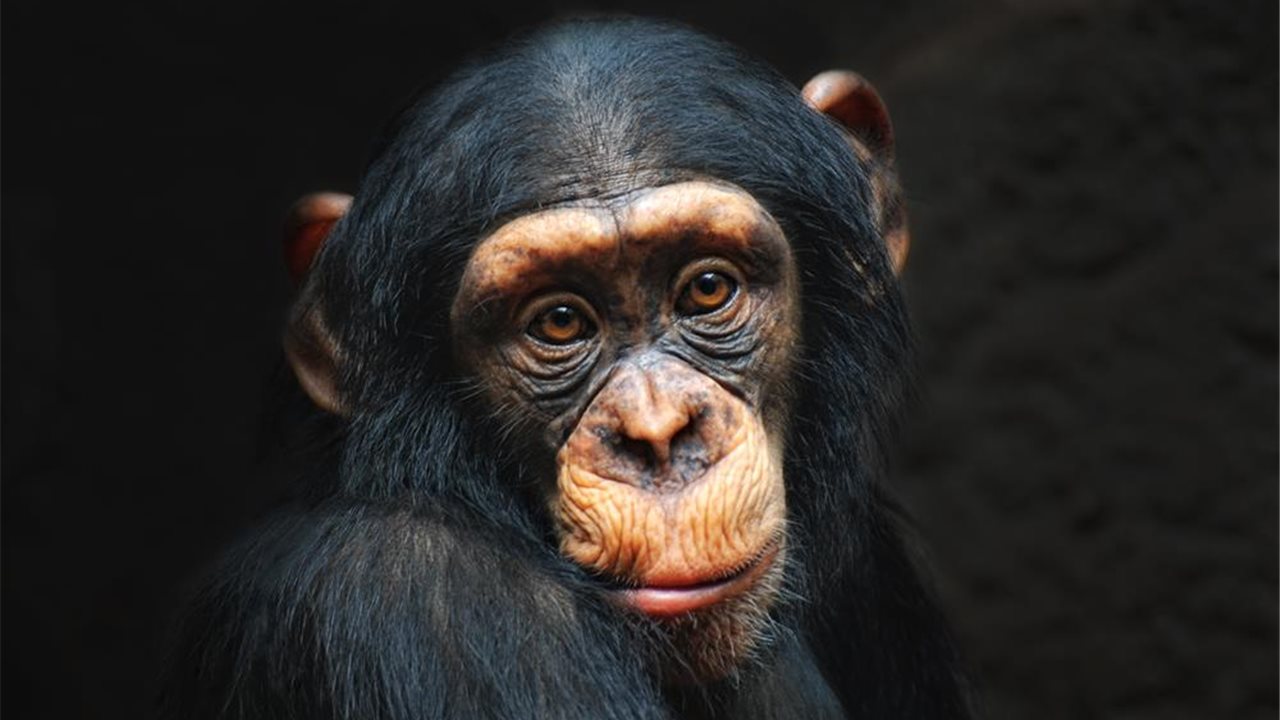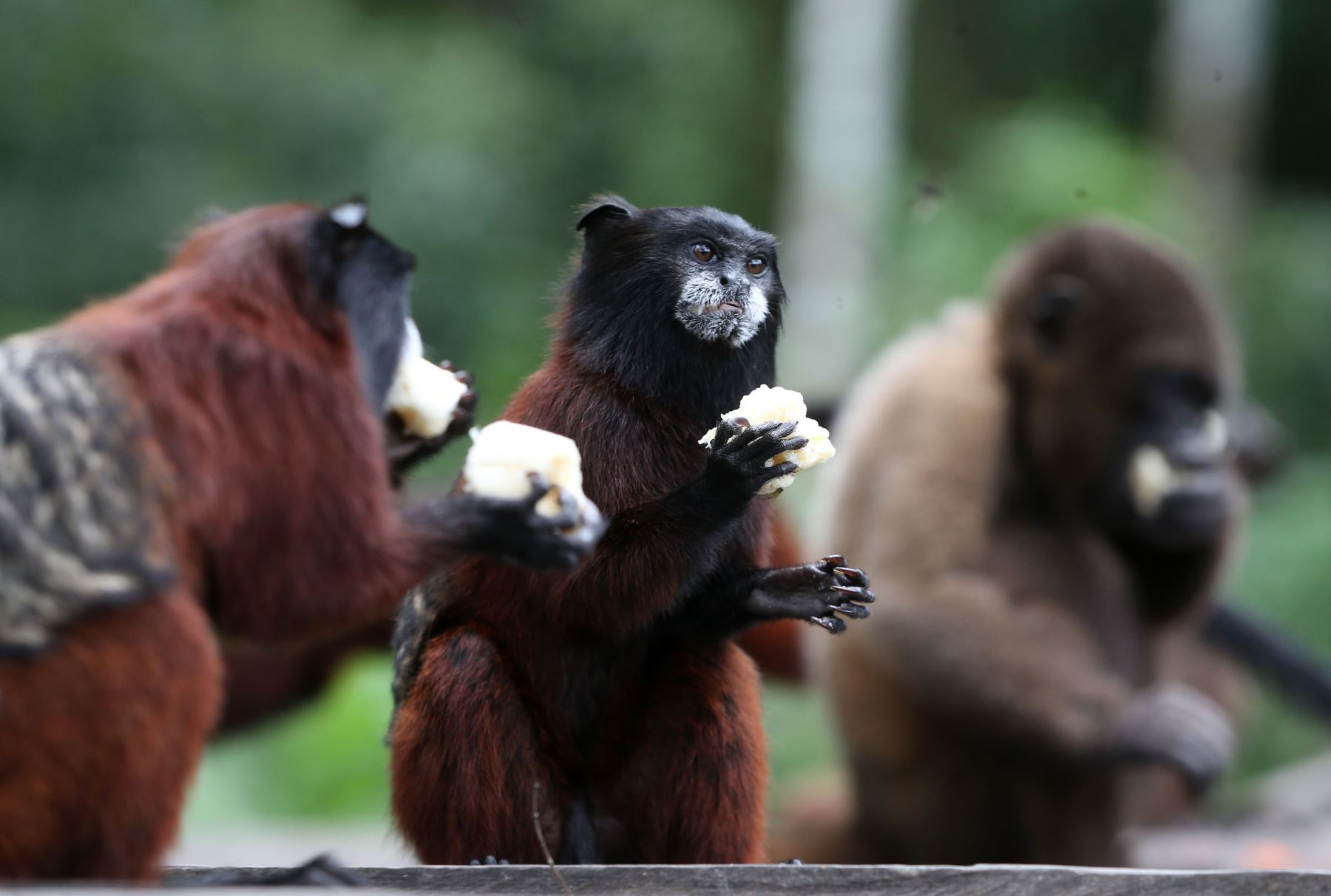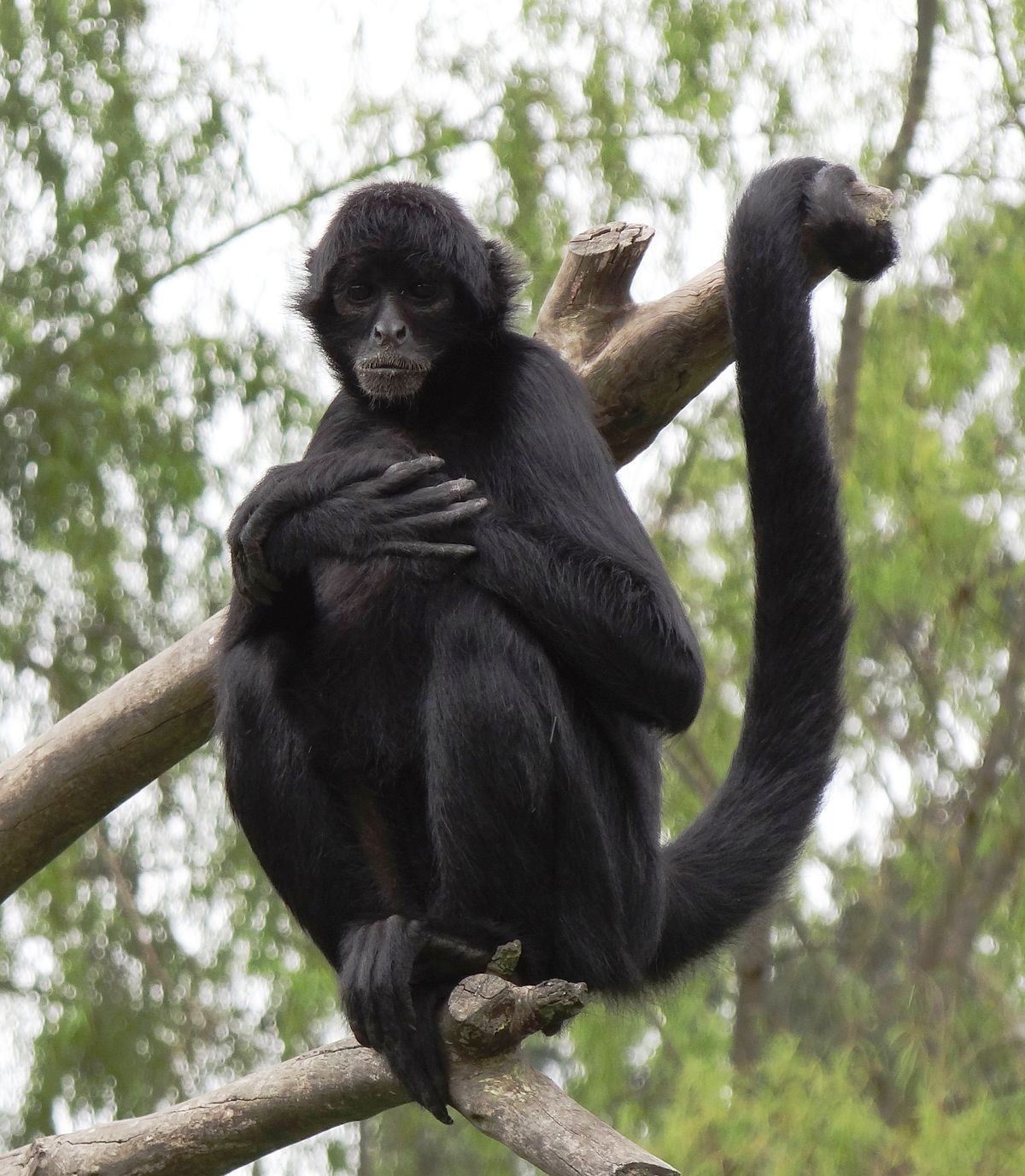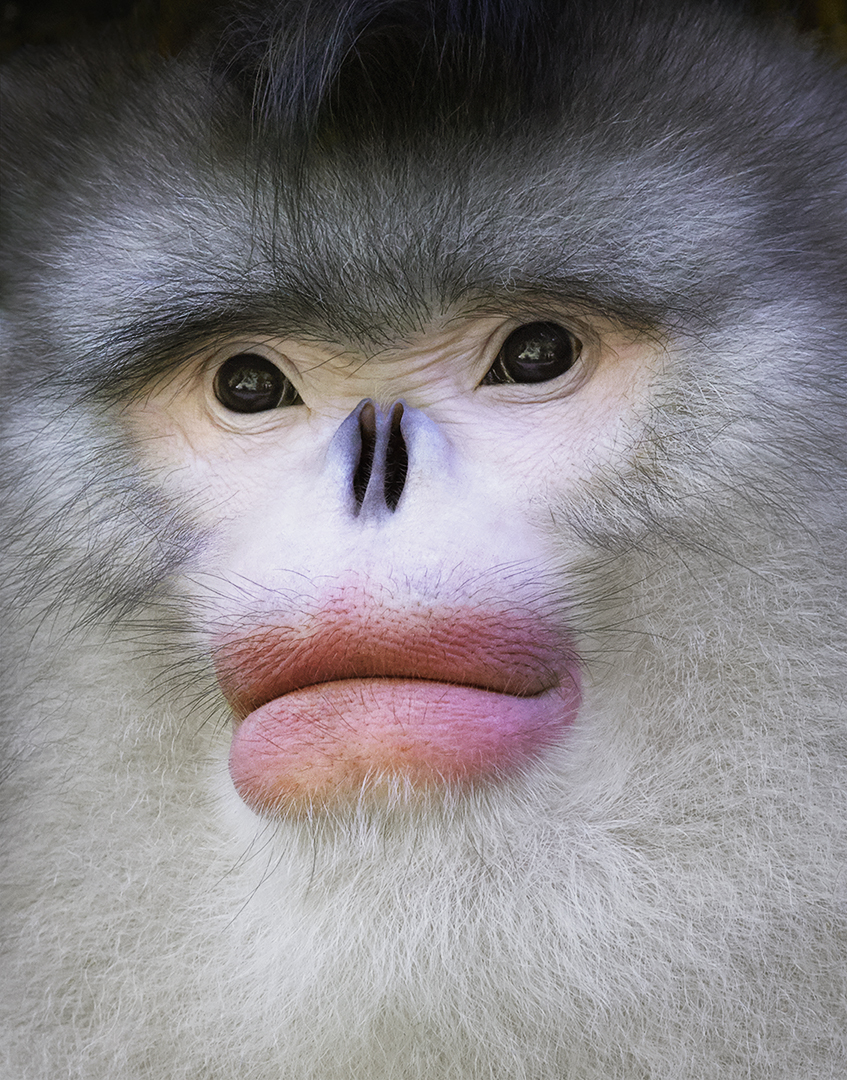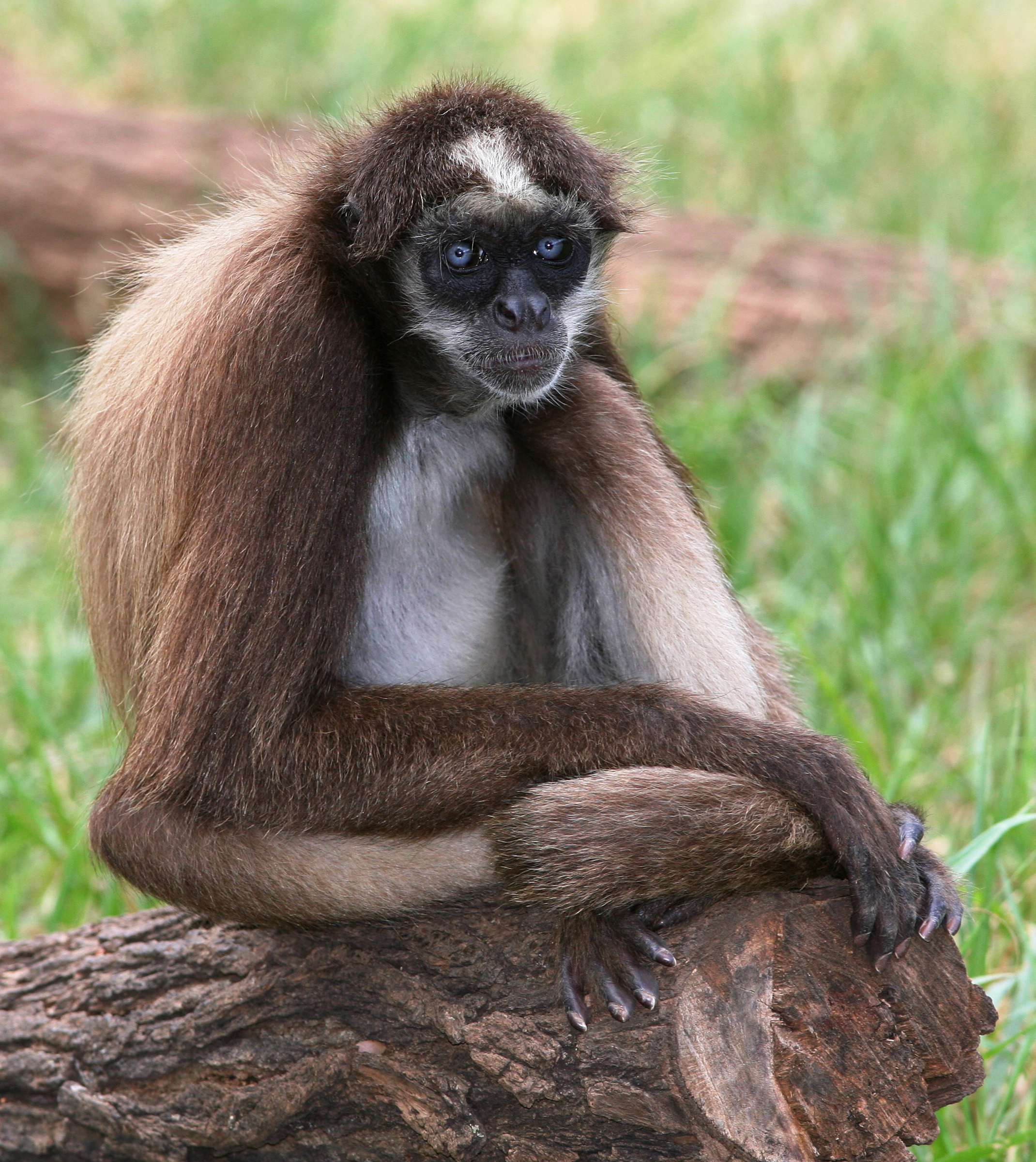Have you ever wondered how many classes or types of monkeys exist on the planet? Well, the answer to that question is incredible, because there are many types of monkeys, so many that there is even a ranking of the most beautiful, the ugliest, the friendliest and even those with the strangest behavior. For this reason, we invite you to read this article, to learn more about their classes, names, characteristics, customs and more.
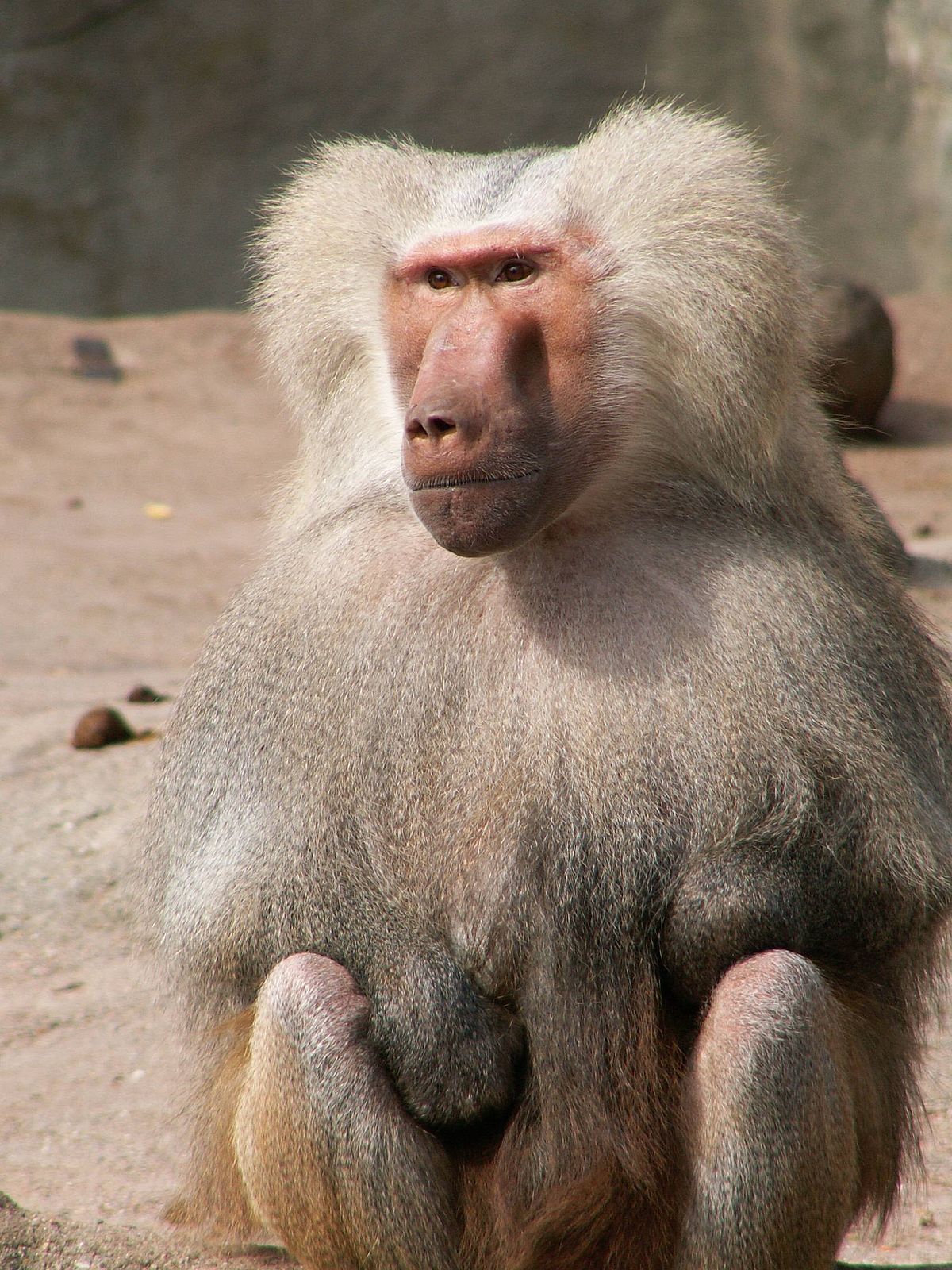
The monkeys
There are many types of monkeys, but we will start by saying that they are mammalian animals, as well as the apes of the infraorder Simiiformes. This word is the one that is used descriptively to refer to groups of primates, without it having any relevance that they are monkeys that belong to the new world or the families of monkeys that belong to the old world.
It is usual that several species of monkeys live in trees, although there are races that live essentially on the ground, as is the case of baboons. Most types of monkeys are also diurnal animals, meaning they are active during the day. Monkeys are generally described as intelligent animals, particularly when it comes to monkeys belonging to the old world.
Lories, galagos and lemurs are not types of monkeys, although they are boisterous primates. In the same sense as monkeys, tarsi are primates; but that doesn't mean they're monkeys. Monkeys, including apes, differ from other primates in that females have only two pectoral nipples, males have a pendulous penis and no sensory whiskers.
Types and Species
Thanks to the previous explanation, we now know that not every primate that we can observe is a monkey. So that the reader can have a certain knowledge of what are the races of primates that are, we bring you a list with the particularities of the best known types of monkeys that exist on the planet.
Pygmy Marmoset Monkey
Of the types of monkeys, the pygmy marmoset monkey (Cebuella pygmaea) is a small-sized species that belongs to the new world and is native to the tropical forests of the western margin of the Amazon in South America. This is the species of monkey that is characterized by being the smallest and is also one of the smallest primates on the planet, weighing around 100 grams, which is about 3,5 ounces.
Usually its habitat can be in the green jungle forests, particularly on the banks of rivers and, although it may seem strange, its diet is very specific, because it is gomivorous, which means that it feeds on the rubber tree, also known as rubber tree.
Approximately 83% of the pygmy marmoset population live in stable groups made up of two to nine individuals, which includes an alpha or dominant male, a female that acts as a reproductive and up to four successive litters of offspring. The normal conformation of a standard stable group is six individuals. That means that this species of monkey is gregarious and some might add that they like family life.
It is true that most groups are made up of members of the same family, but it is also true that they are open to including one or two other adult members. The pygmy marmoset has been classified differently from typical marmosets, most of which have been included in the genera Callithrix and Mico. For that reason, pygmy marmosets have their own genus, Cebuella, located within the family Callitrichidae.
The International Union for Conservation of Nature classifies them within the scale of Least Concern, within the animals that are at risk of extinction, since they coexist with few problems throughout their range and are not in immediate danger of extinction. a general decline in its population. Its greatest current threats are deforestation, because it leads to the loss of its habitat, and its trade as pets.
proboscis monkey
The proboscis monkey (Nasalis larvatus) or long-nosed monkey or nasic monkey, is a species that lives in the trees of the old world and its color is reddish brown, whose main characteristic is that it has a nose of an unusual size. It is a species that only lives on the island of Borneo, towards Southeast Asia.
This proboscis monkey is a large breed, so it is one of the largest species that are native to the Asian continent. In fact, it rivals only the Tibetan Macaque and several of the gray langurs in size.
Theories on which the great extension of its nose has been based suggest that it is due to the fact that it constitutes a sexual attraction that influences the selection of females, which have a preference for males that can make stronger or deeper vocalizations, and with The size of the nose is achieved by increasing the volume of your call.
The sexual dimorphism, or difference between males and females in this species is accentuated in this species. Males have a head and body span of 66 to 76.2 centimeters, which is 26.0 to 30.0 inches, and usually weigh 16 to 22.5 kilograms, which represents 35 to 50 pounds, although their maximum known weight is 30 kilograms. , about 66 lbs.
The females have a length of 53,3 to 62 centimeters, or what is the same, 21,0 to 24,4 inches, including the extension of the head and body and can weigh between 7 to 12 kilograms. , about 15 to 26 pounds, but specimens have been found that have had a weight of 15 kilograms, or about 33 pounds. But the most characteristic dimorphism is found in the large nose or trunk that only males have, and which can exceed 10,2 centimeters, or 4,0 inches, in length and can hang below the mouth.
White-faced capuchin monkey
The white-faced capuchin monkey (Cebus imitator), has also received the name of Panamanian white-headed capuchin or Central American white-faced capuchin, it is a medium-sized species of monkey and, by its name, we will already know that it is a native of the new world. It belongs to the family Cebidae, subfamily Cebinae.
It is native to the forests of Central America, and it is a species that is very relevant in the ecology of the forests due to the role they play in the dissemination of seeds and pollen.
It is one of the best known monkeys, because the Panamanian white-faced capuchin is the typical image of the monkey that accompanies an organ grinder. Thanks to the cinema, this species of monkey has become very popular in the media, particularly in North America, due to its appearance in the Pirates of the Caribbean film series.
It is a type of monkey that is very intelligent and that has been trained to help paraplegics. It is a medium-sized animal, which can weigh up to 3,9 kilograms, which is about 8,6 pounds. Most of its body is black, but its face is pink and a large expanse of the front of its body is white, hence its common name.
It has a characteristic prehensile tail that usually keeps the body coiled and uses it to help support itself when feeding under a tree branch. In its natural environment, the white-faced capuchin monkey is very versatile, as it can live in many different types of forests.
Their diet can also be very varied, because it can include fruits, other plant material, invertebrates and small vertebrates. It lives in groups that can exceed 20 individuals, which include both males and females, and it is a very gregarious animal.
Baboon
Baboons are types of monkeys or primates that belong to the Papio genus, one of the 23 genera of Old World monkeys. The common names of the five species of baboons are the hamadryas, the Guinea, which is also called western and red, the olive, the yellow, and the chacma. Each of these species is native to one of five specific areas of Africa.
But the hamadryas baboon is also native to parts of the Arabian Peninsula, and is among the largest non-hominid primates. There is evidence of the existence of baboons dating back at least two million years. Male hamadryas baboons have large white manes. Sexual dimorphism among baboons can be seen in the differences in size, color, and development of canine teeth between females and males.
Noticeable differences in size and weight can also be seen between baboon species. The smallest, which is the guinea baboon, is 50 centimeters, or 20 inches, long and weighs only 14 kilograms, which is about 31 pounds, while the largest, which is the baboon of Chacma, it has an extension of up to 120 centimeters, about 47 inches, in length and a weight of 40 kilograms, which is about 88 pounds.
All species of baboons have long muzzles, which resemble those of a dog, their jaws are heavy and powerful, they have very sharp canine teeth, their eyes are closed, their skin is very thick, except for the snout area, their tails are short and they have a kind of pads of skin without hair and without nerves on the buttocks that protrude, which are called ischial calluses, whose purpose is to provide them with greater comfort when sitting.
Mandril
The mandrill (Mandrillus sphinx) is a primate. It belongs to the family of types of monkeys that originate in the old world (Cercopithecidae), it is one of the two species that make up the genus Mandrillus. Originally the mandrill received a classification among the baboons, inserting it within the Papio genus, but today it has its own genus, the Mandrillus. Although they present similarities with baboons, these are superficial, since they are more directly related to the Cercocebus families.
Mandrill habitat is situated to the south of Cameroon, Gabon, Equatorial Guinea and the Congo. Preferably, mandrills live in tropical forests. They are gregarious animals and live in very large groups.
The baboons' diet is omnivorous, so they essentially feed on fruits and insects. The mating period is annual and its most important point occurs between the months of July to September, being the most important time of births between the months of December and April. Mandrills are the largest monkey species on the planet. Unfortunately it is a species that is listed as vulnerable by the IUCN.
The mandrill's coat is olive green or dark gray, with yellow and black bands, and its belly is white. Its face is hairless and has an elongated snout with features that make it very recognizable, such as a red stripe down the center and protruding blue ridges on the sides. He has red nostrils and lips, his beard is yellow, and he has white streaks.
Geoffroy's Spider Monkey
Geoffroy's spider monkey (Ateles geoffroyi), has also been baptized with the name of black-handed spider monkey. It is a species that belongs to the spider monkeys, which is native to the new world, particularly Central America, parts of Mexico and probably a small section of Colombia.
There are at least five known subspecies of these types of monkeys. Various primate experts classify the black-headed spider monkey (A. fusciceps), which was found in Panama, Colombia, and Ecuador, as belonging to the same species as Geoffroy's spider monkey. It is one of the largest monkeys in the new world, often weighing up to 9 kilograms, which is about 20 pounds.
A characteristic of this breed of monkey is that the extension of its arms is much longer than that of its legs, and its prehensile tail has the ability to support the entire weight of the animal, since it uses it as an extra limb. His hands have only a vestigial thumb, but he has long, very strong, hooked fingers.
These evolutionary adaptations have allowed this species of monkey to move by swinging thanks to its arms under the branches of the trees. Geoffroy's spider monkeys are highly gregarious, living in groups that can have between 20 and 42 members.
They are omnivorous animals, because their food is essentially composed of ripe fruit and they need large areas of forest to survive. It is classified by the IUCN as an endangered species, due to the loss of large areas of its habitat due to deforestation, it has also been hunted and captured for trade as pets.
white eared tamarin
The white-eared marmoset (Plecturocebus donacophilus), has also been baptized with the name of Bolivian titi or Bolivian huicoco. It is a species of marmoset, a kind of New World monkey, originally from eastern Bolivia and an area to the west of Brazil.
This species of monkey has its natural habitat in an area that extends east from the Manique River, in the department of Beni, Bolivia, to the south of Rondônia in Brazil. The southernmost point of its range includes the forests around the city of Santa Cruz de la Sierra.
It is one of the types of medium-sized monkeys, they have a gray back, although their lower part is orange and they have very characteristic white plumes that come out of their ears.
Its diera is omnivorous, because its food consists mainly of fruits, other plant material and invertebrates. It is usually one of the main victims of birds of prey, although it is known that felines and other species of monkeys attack them. It is a monogamous species and lives in small groups, which can be made up of between two and seven individuals, made up of the couple and their offspring.
Each family group requires an extension of 0.5 to 14 hectares, that is, 1.2 to 34.6 acres of their own territory to live in, and adults have a complex vocal repertoire with which they manage to maintain their territory. Another activity that characterizes them is that they tend to join their tails when they are sitting together or in a group. White-eared tamarins have a life expectancy of over 25 years in captivity.
cotton-top tamarin monkey
The white-headed tamarin (Saguinus oedipus) is a small New World monkey, weighing less than 0,5 kilograms, equivalent to 1,1 pounds. This monkey has a life expectancy of up to 24 years, but under natural conditions it usually dies at 13 years of age. It is one of the smallest primates. The cotton-top tamarin is most easily identified by its long white sagittal crest, which runs from its forehead to its shoulders.
Its habitat is on the borders of tropical forests and in secondary forests of northwestern Colombia. It lives in trees and is a diurnal behavior breed. Its diet is omnivorous, because it is composed of insect and plant exudates, and it is a balancer of the tropical ecosystem, because one of its natural activities is to disperse seeds in the tropical environment.
This species of marmoset monkey exhibits a wide variety of social customs. The behavior they show in the groups in which they live is especially curious, because very strong relationships of hierarchical dominance can be observed, in which only dominant couples are allowed to reproduce.
Normally, the female gives birth to twins and makes use of her pheromones so that the other females in the group do not reproduce. This species of monkey has been widely studied because it has been proven that they have a high level of cooperative attention, as well as it has been seen that they exhibit altruistic and spiteful behavior.
The kind of communication that exists among cotton-top monkeys is highly specialized and exhibits evidence that they possess grammatical structure, which has been a language feature that must be acquired. Currently, unfortunately, it is classified as a critically endangered species and it is one of the most fantastic primates in the world, since it has been verified that there are only 6.000 specimens in the wild.
corn monkey
The corn capuchin monkey (Sapajus apella), has also received the names of brown capuchin and black capuchin. It is one of the types of monkeys native to the new world, particularly from South America. As the various studies carried out for many years have shown, it is one of the primates whose geographical location is the most widespread in the Neotropics.
In recent times it has been reclassified, considering that the black, black and gold striped capuchins are separate species that have formed a new genus, circumscribing the corn capuchin to an exclusive area of the Amazon basin and surrounding areas.
This breed of capuchin is an omnivorous species, because they feed almost exclusively on fruits and invertebrates, but sometimes they also feed on small vertebrates, such as lizards and bird chicks, although they also eat parts of plants.
These types of monkeys have their habitat in a wide variety of different environments, including tropical and subtropical moist forest, dry forest, and disturbed or secondary forest. Like other capuchin breeds, they are gregarious, highly social animals that cohabit in groups of 8 to 15 individuals, headed by an alpha or dominant male.
The corn monkey is stronger than the other capuchin species, it has coarser hair and a long and very thick tail. He also has a bundle of long, stiff hair on his forehead, which can be pulled up like a kind of wig. The color of its fur is brownish gray, but on its belly it is much lighter than the rest of its body.
The hands and feet of the corn monkey are black. The tail is prehensile and very strong, as it can be used as one more limb to hold on to branches, as it supports its weight.
common marmoset
The common marmoset (Callithrix jacchus) is one of the types of monkeys native to the new world. Its natural habitat is the northeast coast of Brazil, in the states of Piaui, Paraiba, Ceará, Rio Grande do Norte, Pernambuco, Alagoas and Bahia. Through the release of some individuals that were in captivity, partly intentional and partly unintentional, this species of monkey has extended its range.
Since the 1920s it has spread to the southeast of Brazil, its first wild sighting being in Rio de Janeiro in 1929, where it has been considered an invasive species, creating great concern about the genetic contamination of other similar species. , such as the scrub marmoset (Callithrix aurita), and there was also concern that it might become a predator of chicks and bird eggs.
The full genome sequence of a female common marmoset was published on July 20, 2014 and became the first new world monkey species to have its genome fully sequenced. Common marmosets are a species of very small monkeys that have relatively long tails for their size.
Males and females are of equal build, but males are slightly larger. The males have an average extension of 188 millimeters, which is about 7.40 inches; while females have an average height of 185 millimeters, which is about 7.28 inches. The weight of males is around 256 grams which is equal to 9.03 ounces on average while the weight of females is around 236 grams which is equal to 8.32 ounces.
The marmoset's fur comes in many colors, particularly related to brown, gray, and yellow. They have white tufts on their ears and their tails show bands or stripes. Their face has black skin around their nose and they have a white glow on their forehead. The fur of the pups is brown and yellow, and the white tuft of the ears grows later.
golden lion tamarin
The golden lion tamarin (Leontopithecus rosalia), which has also received the name of golden marmoset, is a small monkey, native to the new world, that belongs to the family Callitrichidae. Originally from the Atlantic coastal forests of Brazil, unfortunately the golden lion tamarin is a species that is at risk of extinction.
The area in which the specimens of this species are distributed in the wild extends over four areas throughout the southeast of Brazil. With great fear it must be said that according to a recent census, it is thought that there are only 3.200 specimens left in their natural habitat and there is a captive population, in which around 490 specimens are kept alive, distributed among 150 zoos.
This golden lion tamarin was given that name because of its bright reddish-orange fur and extra-long hairs around its face and ears, which give it a distinctive mane. His face is dark and he has no hair. The bright orange fur of this class of monkeys has been determined to be free of carotenoids, which are the compounds that normally produce bright orange colors in nature.
The golden tamarin is the largest race of the Calitrichinas. On average, they measure approximately 261 millimeters, which is equivalent to 10.3 inches, and weigh around 620 grams, which is the equivalent of 1.37 pounds. There are almost no size differences between males and females.
Like the types of monkeys originating in the new world, this specimen of the golden tamarin has tegulae, which are small claw-like nails, instead of ungulae or flat nails, which are those found in all other primates, including humans. Owning the tegulae has allowed the tamarins to cling to the sides of tree trunks.
These little animals can also move quadriplegically along small branches, either walking, running or jumping, which gives them a way of moving more similar to that of squirrels than to that of other primates.
weeping cappuccino
The weeping capuchin (Cebus olivaceus) is a New World capuchin monkey that lives especially in South America. It can be found in northern Brazil, Guyana, French Guiana, Suriname, Venezuela, and probably northern Colombia.
The genus Cebus is divided into several different species. However, taxonomists still raise discrepancies around the specific divisions within this genus, which are precarious and controversial. The Cebus olivaceus is known to live in tall, primary forests and can travel long distances during the day.
These primates are monkeys that are medium in size, have distinctive markings on their heads, and have slightly longer limbs than other types of capuchin, allowing them to leap across the treetops of forests. As with other classes of capuchin monkeys, their diet is omnivorous, because their diet is essentially made up of fruits, invertebrates, other parts of plants and, on rare occasions, small vertebrates.
Although it is true that this class of capuchin is classified as an animal of little concern by the IUCN Red List of Threatened Species, it is also true that it is often preyed upon by many predators in South America, from vultures to jaguars .
emperor tamarin
The emperor tamarin (Saguinus imperator), is a class of tamarin monkey that, according to accounts, was so named because it had a supposed resemblance to the German emperor Wilhelm II. Its habitat is in the southwestern Amazon basin, to the east of Peru, in northern Bolivia and in the western Brazilian states of Acre and Amazonas.
The fur of this species of marmoset monkey is predominantly gray, although it has yellowish spots on its chest. His hands and legs are black and his tail is brown. He has a peculiarity and that is that he has a long white beard, which branches to both sides beyond his shoulders.
This animal reaches a length of 23 to 26 centimeters, which is equivalent to between 9 to 10 inches, in addition to which it has a long tail of 35 to 41,5 centimeters, equivalent to between 13,8 to 16,3 inches. They weigh around 500 grams, which is about 18 ounces.
The emperor tamarin belongs to the family Callitrichidae, which is a family of new world monkeys. The Callitrichidae groups the two general species of marmosets and tamarins. It has claws on each of its toes and hands, as well as a long mustache, and almost inconspicuous white hairs can also be found on its chin.
However, visually the saguinus imperator has a black chin and both the hair on its chest and belly is a mixture of red, orange and white hairs. On his back, he has fur that is dark brown in color. The inner face of his arms and legs is orange.
Azara Marikina
It is the Marikiná de Azara night monkey (Aotus azarae), also known as the southern night monkey. Its origin is in the new world and it is a kind of monkey from South America. Its habitat is distributed between Argentina, Bolivia, Brazil, Peru and Paraguay. This species is monogamous, and its social characteristic is that males provide a large amount of parental care.
This spice is named after the Spanish naturalist Félix de Azara. Although it is a species that is essentially nocturnal, some populations of Azara night monkeys are particularly special among night monkeys, because they have managed to adapt to be active both during the day and at night. This species is included in the IUCN Red List as Least Concern.
Due to the lack of information on body size and weight of Azara night monkeys, their measurements have been estimated from a small number of wild samples. For this reason, it has been argued that the average length of the head and body of the female is approximately 341 millimeters, equivalent to 13.4 inches, while the size of the male is 346 millimeters, equivalent to 13.6 inches.
The average weight has been estimated at about 1,254 grams, equivalent to 2.765 pounds, for the male Aotus azarae azarae; 1,246 grams, which is about 2.747 pounds, for a female Aotus azarae azarae; 1,180 grams, which is 2.60 pounds, for a male Aotus azarae boliviensis; and 1,230 grams, equivalent to about 2.71 pounds, for a female for Aotus azarae boliviensis.
Their gestation period is around 133 days. The life expectancy of the Azara night monkey in its natural environment is unknown, but it is believed that the captive life of individuals belonging to the genus Aotus extends up to about 20 years of age.
mantled howler monkey
The mantled howler monkey (Alouatta palliata), or golden-mantled howler monkey, is a species of howler monkey, native to the New World, particularly Central and South America. It is one of the monkey species that has been seen and heard the most in the wild in Central America.
Its name mantle is due to the long hairs that are on its sides. This kind of howler monkey is one of the largest monkeys in Central America, because it has been established that males can weigh up to 9,8 kilograms, equivalent to 22 pounds.
It has also been established that it is the only Central American monkey that eats large amounts of leaves, for which it has developed several adaptations that allow it to digest this particular diet, because the leaves are difficult to digest and provide less energy than the most other foods. In addition howler monkey spends most of the day resting and sleeping.
Male mantled howler monkeys have enlarged hyoid bones, this also means that they have a hollow bone located very close to their vocal cords, which allows it to amplify the sound of calls made by males, due to which they have received the howler name.
Howling is what makes it possible for these monkeys to locate each other without having to waste their energy making moves or risking a physical dispute. The appearance of the mantled howler is very similar to that of other howler monkeys of the genus Alouatta, except for its color.
It has been observed that the average body weight of the mantled howler monkey can differ significantly from population to population in different locations. The brain of an adult howler monkey weighs approximately 55.1 grams, which is equivalent to 1.94 ounces, making it smaller than the brains of several other species of smaller monkeys, such as the white-headed capuchin.
Collared marmoset monkey
The collared titi monkey (Cheracebus torquatus) is a species or compound closely related to the species of titi monkey. This individual is one of the types of monkeys of the new world, especially located in South America. They are so small that it has been verified that five adult individuals of this species weighed an average of 1462 grams, with an average of 1410 to 1722 grams.
Its head-body measurement spread is approximately 290 to 390 millimeters and its tail length is around 350 to 400 millimeters. They have very little hair on their faces, being limited to short, sparse white hairs on black skin. There is no sexual dimorphism in this class of marmoset monkeys, although it usually happens that the male has slightly longer canine teeth than the female.
The fur of this class of marmoset monkeys is commonly uniformly reddish brown or blackish brown. Its tail is blackish in color, mixed with several reddish hairs. Their hands and legs are whitish or dark brown in color.
These shades of fur contrast across all subspecies, having a line or band of white hair that spreads from the chest up and follows the neckline, extending to the ears.
This extension to the ears appears as a strip of faint color in Callicebus torquatus torquatus, which is an unconfirmed subspecies that inhabits Colombia and is different from the other subspecies that have the white stripe that extends to the base of the ears. , although there are other differences that distinguish them from the other subspecies of marmoset monkeys.
Monkeys
Macaques are essentially frugivorous monkey races, although it is possible that they include seeds, leaves, flowers and tree bark in their diet, and some, as is the case of the crab-eating macaque, subsist on a diet of invertebrates and occasionally small vertebrates.
These macaque monkeys constitute a genus (Macaca) of Old World monkeys. They are part of the Cercopithecinae subfamily. Macaques can survive in a wide variety of environments or habitats throughout the Asian continent, and are highly adaptable.
A characteristic of this species of monkey is that all social groups of macaques are matriarchal, because they are organized around the dominant females. They have also learned to coexist with humans and have become an invasive species in some human-inhabited landscapes, such as the island of Mauritius and the Silver Springs State Park in Florida.
It turns out that this type of monkey has become a threat to the conservation of the environment, but it does not stop there, because they also constitute a threat to human beings, because they are carriers of diseases that can be transmitted to man and that also they can be deadly.
Currently, the management of macaques as an invasive species has been done through the implementation of some control methods. Apart from humans (genus Homo), macaques are the most abundant primate genus on the planet, since we can find them from Japan to the Indian subcontinent, and in the case of the barbarian macaque (Macaca sylvanus), passing through northern Africa and southern Europe.
The fur of these types of monkeys is usually a mix or shade of shades from brown to black and their snouts have a rounded profile, with nostrils at the top. The tail does vary depending on the species in question, which can be long, moderate, short or they may not have a tail.
red-bellied tamarin monkey
The red-bellied titi or dusky titi monkey (Plecturocebus moloch) is a species of marmoset, one of the types of New World monkeys, that is endemic to Brazil. Its head is rounded and it has thick, soft fur. It usually adopts a posture that is characteristic of it, with the body hunched over, the limbs together and the tail hanging down.
The body of this type of marmoset is between 28 and 39 centimeters long and its tail is between 33 and 49 centimeters. It is a little animal that can move very quickly if necessary, but rarely does. Its typical behavior is to stay within a very small area, and its diet is based mainly on fruits, insects, spiders, small birds and bird eggs.
It is a kind of diurnal behavior and moves in pairs or family groups, so it is a gregarious animal. They manage to have communication between the individuals of the group thanks to the fact that they dominate a wide repertoire of sounds. The normal thing is that from each litter, the female gives birth to a single young.
The upper incisors of this species are elongated and the incisor canines barely extend beyond the other teeth. The upper molars can sometimes be tricuspid and the lower premolars are relatively simple. The upper and lower molars are quadricuspid. These dental characteristics allow them to mash their food very well.
They have relatively large ears, in many cases obscured by fur on one side of the head. They have a wide inner septum in their nose and their nostrils open laterally. It can happen that in adults the fur on their back is gray, reddish or brown. It is normal for black or white bands to be found on your forehead. This color pattern is observable in both juveniles and adults.
We really hope that you have enjoyed this reading and that you can now better understand and distinguish the types of monkeys that exist in the world, their colors and their spectacular shapes and sizes, with their special characteristics.
If you liked this topic, we recommend these other interesting articles:
